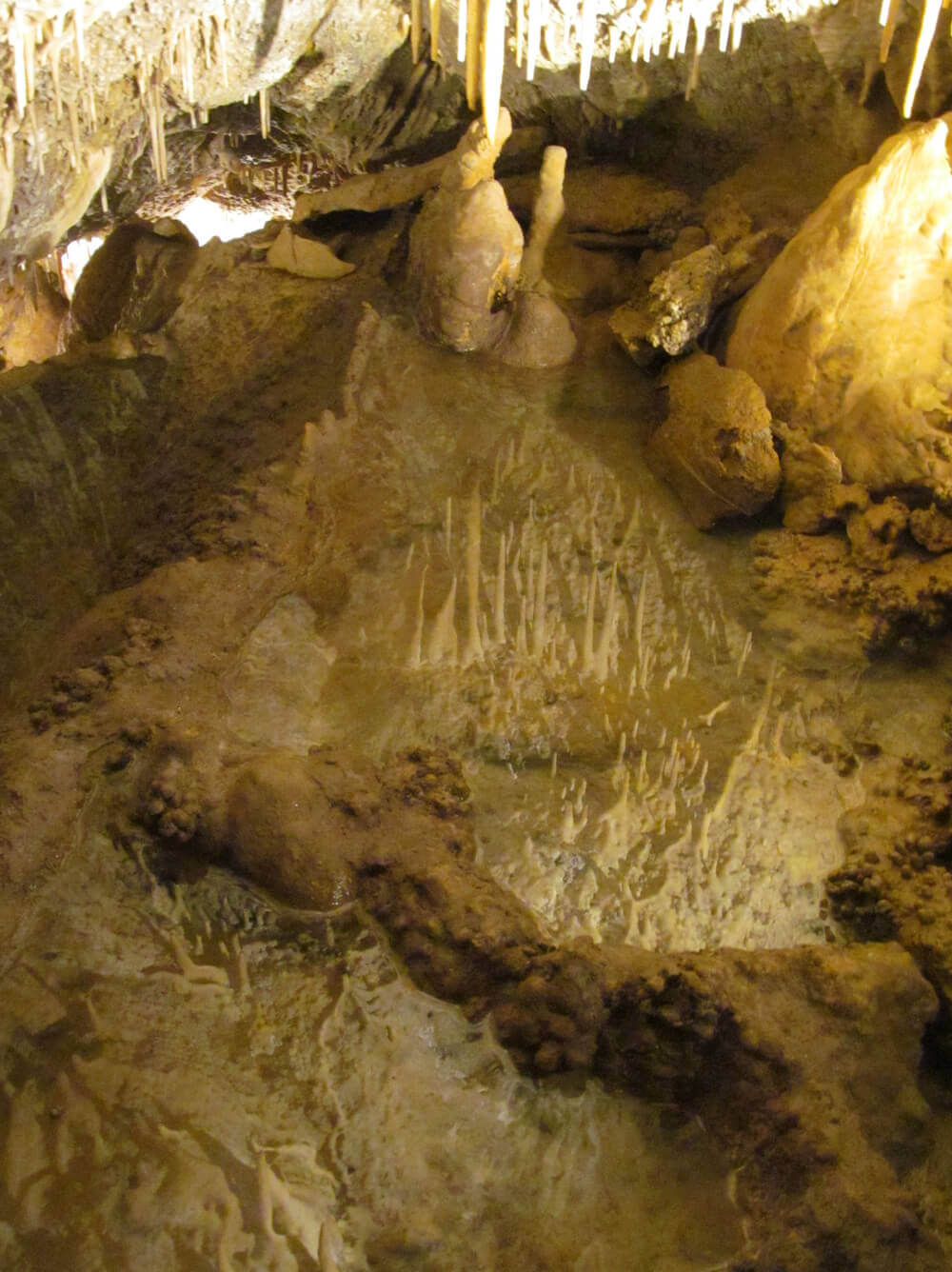
Caves are so much more than holes in the ground, they are rooms ornately arranged by Mother Nature. Check out the wide variety of cave features that form as water dissolves rock to make caves.
The long process by which water carves caves out of limestone leaves behind fascinating formations as the mineral-rich water flows, loses carbon dioxide or evaporates, and leaves the minerals shaped like flowers, bathtubs, cones, needles, rafts, shields, chandeliers, balloons, columns, or bells, among other things.
The most familiar cave features are stalactites reaching down from the ceiling and stalagmites reaching up from the floor, usually, but not always, in a conical shape. If the minerals are deposited rapidly, for example, some stalagmites develop as a thinner structure called a broomstick. You can distinguish them by remembering that stalactites hold tight to the ceiling while stalagmites might make it to the top. Sometimes, paired stalactites and stalagmites meet to form a column.
Cave Features at Glenwood Caverns:
Flowstone. Flowstone is usually calcite or other carbonate minerals that forms in sheets as water flows over the cave floors or walls. The layers are laid down so thin that they conform to the underlying rock at first, but they can become more rounded as they thicken. Other chemicals in the calcite can produce different colors of flowstone, such as iron that gives a red tint.
Cave Bacon. Cave bacon is a kind of drapery that forms as the water flows along the edge of an overhang and leaves a trail of calcite where surface tension suspends the water before it loses carbon dioxide and deposits the mineral. These often appear on the fringes of flowstone. The buildup reflects the ripples and flows of the first deposits and looks like fabric drapery. When the drapery formations have different bands of color or darkness because of materials in the water at different times, they are called cave bacon.
Soda Straws. Stalactites in their early stages are hollow, long translucent tubes hanging from the ceiling. These delicate structures can grow long – they have been found up to 30 feet—but they usually begin to have water flow on the outside that builds up in the more common icicle shape of stalactites.

Cave bacon:
Cave Popcorn. Cave popcorn, a fairly common formation, is one form of coralloids that resemble knobs, globes, buttons, or corral and form in air, usually from water that seeps out of rocks, or still cave pools. Unlike most other features, they form because the water evaporates rather than because it lost carbon dioxide.
See all these amazing cave features on the Adventure Park’s two cave tours—King’s Row and the Historic Fairy Caves. Learn more and make plans to go underground at glenwoodcavdev.wpengine.com.




